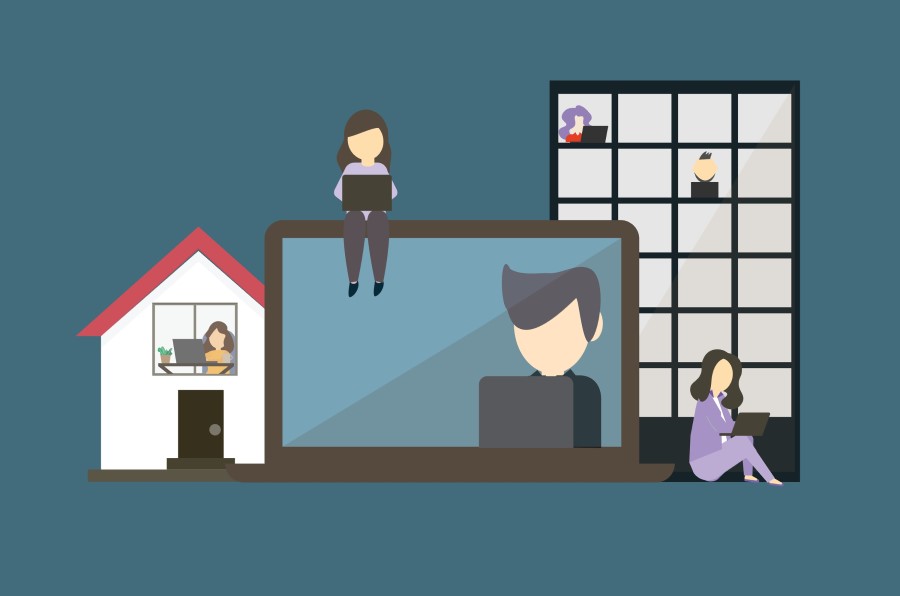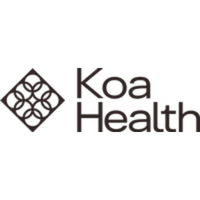New ways of working: how benefits technology is supporting hybrid working

A shift to hybrid working could revolutionise the workplace, and to ensure this is embedded successfully, employers need to have the right tools to support their workforce during these times of change. As a company that made the switch from an office-based environment to a hybrid workplace successfully, there are a few clear measures employers can take to ensure hybrid teams thrive.
What support do companies need to offer for successful hybrid working?
So, what does offering support for hybrid workers actually entail? As a starting point, employers must provide access to convenient and effective collaboration tools. Ideally, employees should be able to easily communicate and work on projects with anyone in the company, regardless of their location.
At Koa Health, that has meant leveraging Slack, Figma, Trello, Google Docs, and Jira among others (no we’re not brand ambassadors, these are just the tools that work for us). Whatever your company’s needs are, there is likely software out there that will make life easier for your workforce. The trick is finding it and making it readily available to your teams.
The role of leadership in successful hybrid working environments
Successfully making the shift to hybrid working also requires buy-in from leadership, with managers of remote team members reviewing any potential gaps in team communications. Fostering relationships between onsite and remote workers has always been necessary for global businesses, and now virtual working is more prevalent, clear ground rules need to be communicated to ensure no one is excluded. For example, at Koa Health, we suggest our teams attend group calls on their individual laptops in hybrid meetings, even when some of them are in the same room.
Although there are many aspects of hybrid working that can support mental wellbeing, there are still elements of hybrid working that can be challenging for many individuals. The pandemic continues to bring greater isolation, lack of social contact and a blurring of work and personal boundaries. Employers can start to mitigate these issues by providing training on how to manage successful virtual teams, by offering digital mental health support and organising regular meet-ups (digital or physical) to keep employees connected with their colleagues, the company, and the company’s mission and purpose.
Supporting our hybrid team's wellbeing is the Koa Health People Team’s top priority, and we believe that staying connected is key to this. From pairing our global team members up on a weekly basis for a virtual coffee, to encouraging our line managers to check in more frequently with their teams, we’re committed to keeping the lines of communication open, across our entire organisation. As much as we are all keen to meet, our next global gathering will be held virtually whilst each of our locations rules on travel change.
How to choose benefits that support hybrid working
During a shift to hybrid working, it’s vital that the other parts of your business also evolve, including your reward package, which can help to support a hybrid workforce. Here are some of the ways you can align your benefits with a move to hybrid working:
Look at what is and is not working
Take the opportunity to review your current rewards and benefit offerings, as benefits provided before the pandemic may no longer be relevant under the current climate. Check if your team members are actually using the reward solutions you provide, a one size fit all approach (particularly for global companies) may no longer be suitable.
You should be able to track usage data of any digital benefits you offer, while anonymised surveys can help reveal staff uptake overall. Once you understand what benefits are working and what are not, you can start to adjust your offering accordingly.
Remember that the data from your rewards can also be used to measure employee engagement – not just uptake. So you’re not simply looking at how often employees use them, but also how effective they are.
Make current offerings more accessible for employees
Rewards and benefits should be inclusive and easily accessible to all, catering for as many of your team as possible. If they are difficult to access on the go, for example, you might want to consider investing in a tool that makes them easier to use from any device or location.
The same applies to non-digital perks, such as a gym or fitness membership. Workers in rural areas, for instance, may not be able to benefit from this sort of perk in the same way as city-based workers (should they even wish to continue to use these rewards). A virtual fitness tool, or a gym that also offers online classes are some options that are more likely to be a practical alternative for your entire team.
Consider a hybrid rewards offering for a hybrid work model
Although digital rewards are scalable, trackable and generally more accessible than face-to-face offerings, having a mix of the two is a more efficient way of accommodating everyone’s preferences. It also better reflects a hybrid working model, which in itself is a mix of face-to-face and remote working.
No matter what rewards and benefits your company currently provides, it’s important to remember that they should not only adapt well to your organisation’s ways of working, but also to your employees’ diverse circumstances. Your people are what make your organisation exceptional. Ensure they have access to the tools they need to thrive.
The author is Noreen O’Prey, global people & culture lead at Koa Health.
This article is provided by Koa Health.
Supplied by REBA Associate Member, Koa Health
At Koa Health, we believe digital mental health solutions are the answer to mental health issues.







